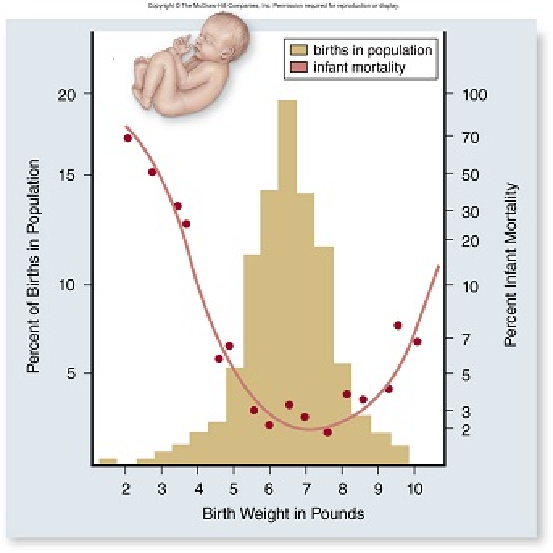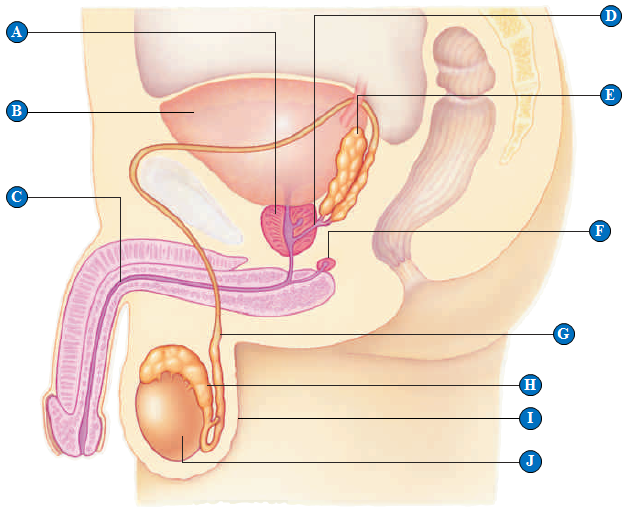A. Prostate gland
B. Urinary bladder
C. Urethra
D. Ejaculatory duct
E. Seminal vesicle
F. Bulbourethral gland
G. Vas deferens
H. Epididymis
I. Scrotum
J. Testis
A. 1
B. 2
C. 3
D. 4
E. 5
F. 6
G. 7
H. 8
I. 9
J. 10
You might also like to view...
In the graph below, which baby characteristics would explain the percent infant mortality curve and any subsequent effects on fitness?

A. The smaller the baby the better the chance of survival.
B. The baby needs to be small enough to survive after birth, but large enough for a safe delivery.
C. The baby needs to be large enough to survive after birth, but small enough for a safe delivery.
D. There is no correlation between birth weight and survival.
E. The larger the baby the better the chance of survival.
Clarify Question
· What is the key concept addressed by the question?
· What type of thinking is required?
· What key words does the question contain and what do they mean?
Gather Content
· What do you already know about fitness? How does it relate to the question?
Consider Possibilities
· What other information is related to the question? Which information is most useful?
Choose Answer
· Given what you now know, what information and/or problem solving approach is most likely to produce the correct answer?
Reflect on Process
· Did your problem-solving process lead you to the correct answer? If not, where did the process break down or lead you astray? How can you revise your approach to produce a more desirable result?
Compared to other muscle tissues, cardiac muscle has more ________ but less ________
a. glycogen / ATP b. adipose tissue / ATP c. nuclei per cell / striations d. mitochondria / glycogen
In the chemical shorthand, 14C, the 14 represents the number of ____
a. excess neutrons b. protons plus neutrons c. electrons d. protons plus electrons e. radioactive particles
Salmonella typhi
A. multiplies within phagocytes. B. is not a coliform. C. can be treated with antimicrobics. D. causes invasive infection of the small intestine. E. All of the choices are correct.
